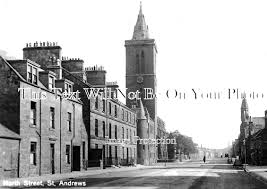The Historical and Cultural Significance of St Andrews

Introduction
St Andrews, located on the east coast of Scotland, is renowned for its rich history, beautiful landscapes, and as the birthplace of golf. Hosting the prestigious University of St Andrews, established in 1413, this small town attracts tourists, students and enthusiasts from around the globe. The relevance of St Andrews extends beyond its picturesque scenery; it plays a pivotal role in Scotland’s cultural and educational landscape, making it a subject of significant interest.
Historical Overview
St Andrews has a long and storied past. It served as an ecclesiastical centre since the 8th century and is famed for its medieval history, notably the ruins of St Andrews Cathedral, which was once the largest church in Scotland. The town’s reputation as a religious hub has been pivotal, influencing many historical events, particularly during the Reformation.
The university, one of the oldest in the English-speaking world, has produced numerous notable alumni, including several British Prime Ministers, Nobel laureates, and leading figures in various fields. The university not only contributes to the town’s economy but also enriches its cultural fabric.
Golf: The Home of the Sport
St Andrews is often referred to as the ‘Home of Golf’, and for good reason. The Old Course, established in the 16th century, is considered the oldest golf course in the world and is a pilgrimage site for golf enthusiasts. The town hosts The Open Championship periodically, attracting thousands of visitors who come to watch some of the best players in the game.
The golf community significantly contributes to St Andrews’ economy and tourism, with the town offering various golf-related activities, ranging from lessons to merchandise. The blend of historical significance and modern sporting excellence makes it a compelling destination for many.
Recent Developments
In recent months, St Andrews has seen the growth of eco-tourism and sustainable practices in its hospitality sector, as businesses adapt to the increasing demand for environmentally friendly travel options. The local government has also initiated projects to enhance the town’s infrastructure while preserving its rich heritage.
Conclusion
St Andrews continues to thrive as a centre of history, education, and sport. As it balances its rich heritage with modern development, the town remains a vital landmark in Scotland’s cultural landscape. For readers, visiting St Andrews offers a chance to not only witness its historical marvels but also engage in the ongoing legacy of golf, ensuring that the town retains its significance well into the future.









